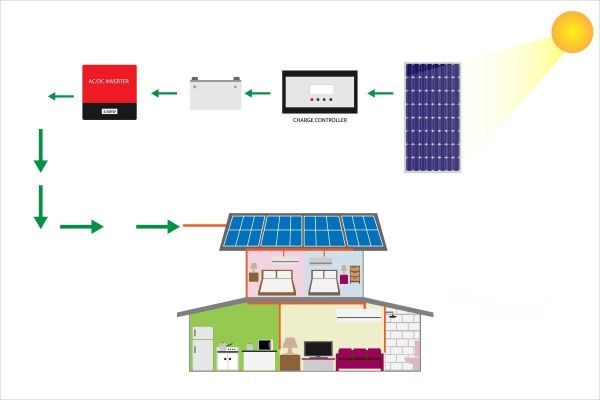The function of a solar charge controller is to regulate the process of charging a battery from a solar panel. It ensures that the battery receives the optimum amount of power from the solar panel, while preventing overcharging and damage.
Here is a breakdown of how it works:
Solar panel input: The solar charger controller is connected to the solar panel, which converts sunlight into electrical energy. The output of the solar panel is connected to the input of the regulator.
Battery output: The solar controller is also connected to the battery, which stores the electrical energy. The battery output is connected to the load or device that will use the stored energy.
Charge regulation: The solar charger controller uses a micro controller or other control mechanisms to monitor the voltage and current coming from the solar panel and going to the battery. It determines the state of charge and regulates the flow of energy accordingly.
Battery charge levels: The solar controller typically operates in several charging stages, including bulk charge, absorption charge and float charge.
① Bulk charge: In this stage, the controller allows the maximum current from the solar panel to flow into the battery. This charges the battery quickly and efficiently.
②Absorption charge: When the battery voltage reaches a certain threshold, the controller switches to absorption charging. Here it reduces the charge current to prevent overcharging and damage to the battery.
③ Float charge: Once the battery is fully charged, the regulator switches to float charge. It maintains a lower charge voltage to keep the battery in a fully charged state without overcharging it.
Battery protection: The solar charger controller incorporates various protection mechanisms to prevent damage to the battery, such as overcharging, deep discharging and short-circuiting. It will disconnect the battery from the solar panel when necessary to ensure battery safety and longevity.
Display and control: Many solar charger controllers also have an LCD display that shows important information such as battery voltage, charge current and charge status. Some controllers also offer control options to adjust parameters or set charging profiles.
Efficiency optimization: Advanced solar charger controllers may use additional features such as Maximum Power Point Tracking (MPPT) technology. MPPT maximizes the energy harvest from the solar panel by dynamically adjusting input parameters to find the optimum operating point.
Load control: In addition to controlling the charging process, some solar charger controllers also offer load control capabilities. This means that they can manage the power output to a connected load or device. The controller can turn the load on or off based on pre-defined conditions such as battery voltage, time of day or specific user settings. Load control helps optimize the use of stored energy and prevents over-discharging of the battery.
Temperature compensation: Temperature can affect the charging process and battery performance. To take this into account, some solar charge controllers include temperature compensation. They monitor the temperature and adjust the charging parameters accordingly to ensure optimum charging efficiency and battery life.
Remote monitoring and control: Many solar charger controllers have built-in communication interfaces, such as USB, RS-485 or Bluetooth, which allow remote monitoring and control. This allows users to access real-time data, change settings and receive notifications on their smartphones, computers or other devices. Remote monitoring and control provides convenience and allows users to efficiently manage their solar charging system.
In summary, a solar charger controller regulates and manages the charging process between a solar panel and a battery. It ensures efficient charging, protects the battery from damage, and maximizes the use of the available solar energy.
Post time: Sep-05-2023
